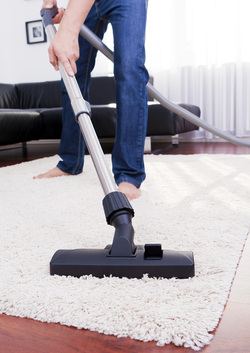
Bleach and some other chemical disinfectants can completely destroy the spores. However, these chemical can also damage carpet fabrics and even hard flooring services. A HEPA certified vacuum cleaner can remove the majority of the fungal spores without putting your floors at risk.
The name of the game is to simply reduce your exposure to the spores. Most of the spores are in the shoes in close vicinity to the toenails were they can get back in the damaged toenails and then re-infect the toenails. It is most important to decontaminate the shoes and socks. This is far more important than trying to keep dry flooring surfaces fungus-free.
The biggest source of fungus in the home are areas that are continually damp. For example, most bathrooms and showers obviously have more moisture than most living rooms.
In many people’s homes, the family members get up in the morning, shower and then leave for the day. So the bathroom may have a reasonable chance of drying out during the day. In contrast, gym locker rooms stay damp all day long.
Part of the concern with foot fungus exposure in public showers and locker rooms is that people come and go. There is a continual re-moisturization of the surfaces in gymnasiums and other public showers. Those areas never dry out. And because of all that moisture, the fungus has more of an opportunity to thrive.
Cleaning the bathroom with a dilute solution of bleach or other chemical disinfectant that can destroy the fungus can certainly decrease the overall amount of toenail fungal spores and live fungal filaments that could get spread throughout the home.
While it is a good idea and totally reasonable to want to remove all of the fungus from the home, it is logistically a very difficult task. Just focus on making sure that the bathroom is clean and that you control the amount of fungus in your shoes and socks.
Taking those steps will help to reduce the amount the risk of reinfection as you cure your toenail fungus.
 RSS Feed
RSS Feed